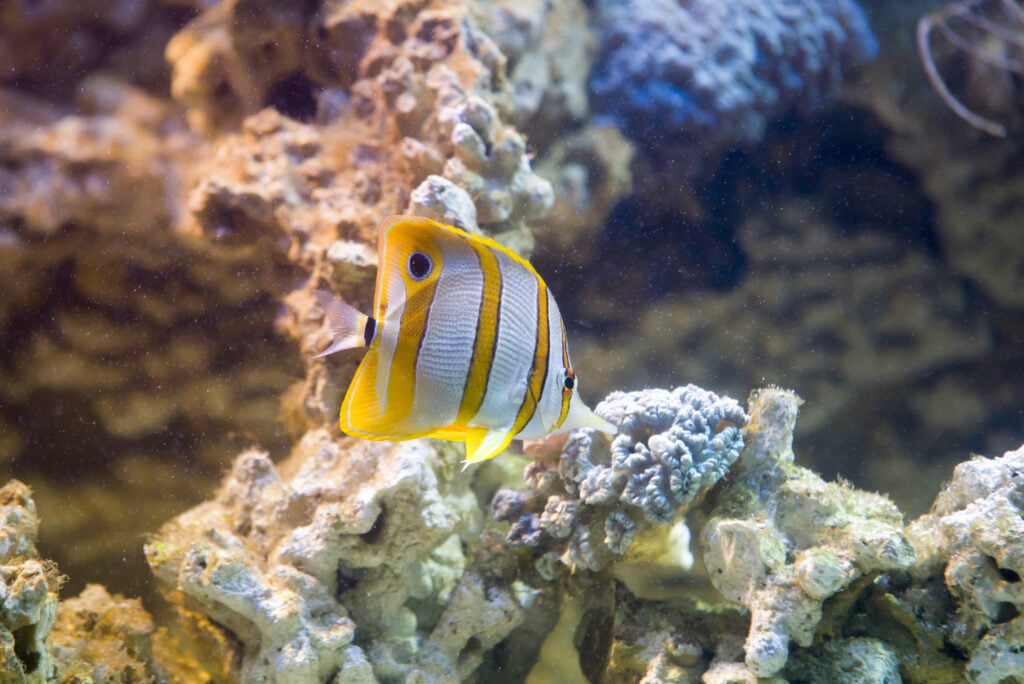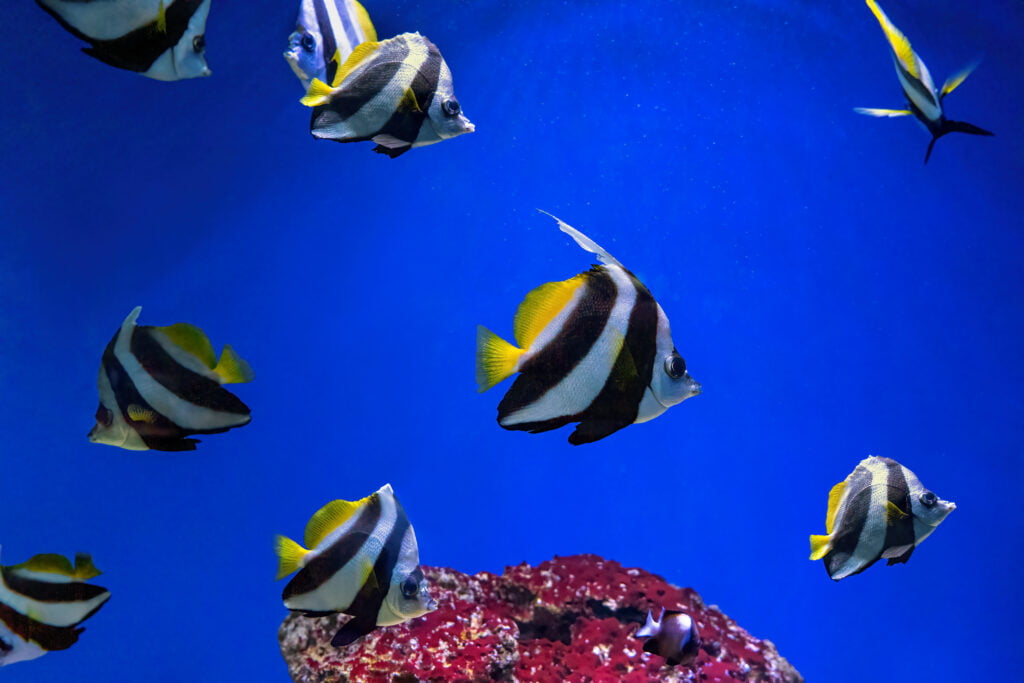10 Fascinating Facts About Butterflyfish

With over 120 dazzling species, butterflyfish unveil nature’s majesty under the sea. Their beautiful colors, unique adaptations, and compelling behaviors make them true marvels of the deep.
Let’s explore 10 fascinating facts about these tropical beauties and uncover their significance in the marine ecosystem:
1. Taxonomy and Classification

Butterflyfish belong to the family Chaetodontidae, consisting of over 120 species across 10 genera. Some common genera include Chaetodon, Chelmon, Forcipiger and Hemitaurichthys.
Based on appearance, butterflyfish can be categorized into 2 main groups:
They are closely related to marine angelfish but can be distinguished by their protruding snouts.
2. Striking Colors and Patterns
Vibrant colors and graphic patterns define the aesthetic appeal of butterflyfish. They exhibit a diverse palette – from dazzling yellows, oranges, and silvers to deep blues, blacks, and whites.
These colors serve multiple functions:
Some exceptionally vivid species include the raccoon butterflyfish, spotted butterflyfish, and threadfin butterflyfish.
3. Protruding Snouts
A key physical feature is the protruding snout, allowing butterflyfish to forage in tight spaces between corals. Their narrow, pointed mouths enable them to pick out soft invertebrates and coral polyps.
Some species like the forcepsfish have evolved elongated snouts for probing into cracks and holes. Others like the coral croucher have upturned mouths suited for nipping off polyps.
This shape gives them an advantage over other fish in utilizing the reef ecosystem.
4. Continuous Dorsal Fins

Butterflyfish have a single continuous dorsal fin, unlike most other fish. This aids maneuverability as they flit through complex coral structures.
The uninterrupted fin with flexible spines allows precise steering and reversing movements. Paired with their small size, butterflyfish can twist and turn abruptly to evade predators.
Some species like begonias have tall dorsal fins that extend like sails. Others like the threadfins have dramatically elongated dorsal and anal fins.
5. Diet and Feeding
Coral polyps form a major part of their diet, specifically stony coral polyps or anthozoa. Some other food sources include:
Their specialized diets make them highly selective feeders. Each species tends to stick to certain coral species or zones within the reef.
Some have evolved to feed almost exclusively on coral polyps like Milletseed butterflyfish. Others like the saddle butterflyfish focus on small invertebrates in the sand bed. This partitioning of food resources allows different species to thrive together.
6. Reproduction and Life Cycle
Butterflyfish form monogamous pairs and mate for life. Both partners participate in a synchronized ascent through the water column to spawn.
The female releases up to 250,000 buoyant eggs which are externally fertilized by the male. The fertilized eggs float to the surface where they hatch within a few days.
The larvae go through a planktonic stage, drifting and feeding in open waters to support their growth. Within 6 weeks, the larvae settle back onto the reef and metamorphose into juvenile fish.
7. Habitats and Range
Butterflyfish live in tropical and subtropical marine waters across the Atlantic, Pacific, and Indian Oceans. They primarily inhabit coral reefs around islands and continental coastlines.
Different species occupy specific coral reef niches:
A few species have also adapted to seagrass beds adjacent to reefs. Overall, their distribution is limited by the availability of live coral which provides both food and shelter.
8. Predators and Defenses

Butterflyfish face predation from a range of reef predators:
To avoid predators, they rely on:
9. Relationships with Other Species
Butterflyfish form fascinating relationships with other marine species:
Cleaning symbiosis – Butterflyfish get parasites removed by cleaner wrasses and shrimp, in exchange for not eating the cleaners.
Parasitism – Juveniles often shelter among the tentacles of sea anemones, gaining protection while hosting anemone parasites.
Commensalism – Some butterflyfish species closely accompany large marine animals like sharks, rays, turtles etc. gaining safety while disturbing the host’s prey.
10. Conservation Concerns
Most butterflyfish species are reef-dependent and vulnerable to habitat loss. Major threats include:
Conservation efforts centered on reef protection like marine reserves can help their populations recover. Managing collection practices is also important.
Butterflyfish serve as indicator species – their sharp decline signals reef degradation while their return reflects restoration. By conserving these vibrant fish, we safeguard our splendid seascape.

Key Takeaways:
By taking a deep dive into butterflyfish, we uncover nature’s ingenuity underwater. These tropical beauties highlight the interconnectivity and beauty of coral reef ecosystems. Understanding and appreciating their natural wonders will hopefully translate into active preservation.





